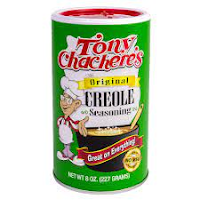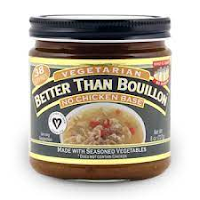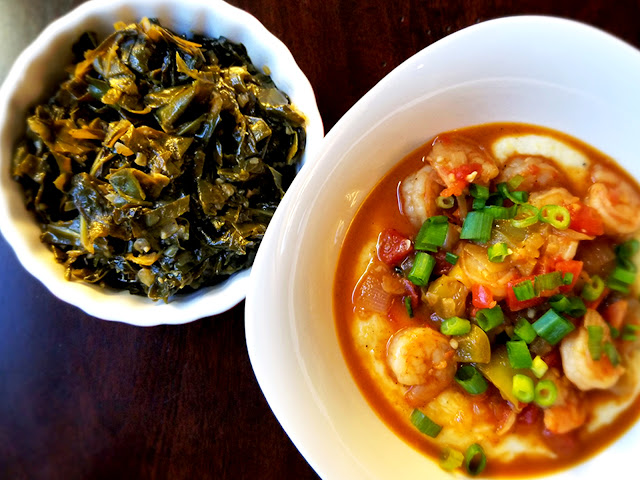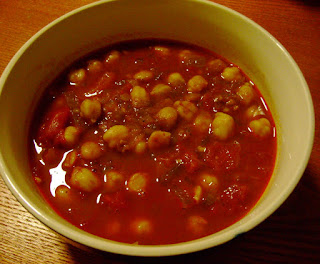How to make pescatarian Cajun dishes, from a Louisiana native
 |
| Instant Pot brown rice jambalaya |
Whether you live in the South or not, you'll be able to make these recipes with ingredients you can find in most grocery stores, or occasionally on Amazon. I no longer live in Louisiana, and I have since found ingredients to make these recipes in various places I've lived throughout across America.
Here are my tips for making delicious Cajun pescatarian food, wherever you live!
1. The only Cajun seasonings you need in your pantry:
- Tony Chachere's. Everyone I know in Louisiana has this in their pantry. It's the perfect ratio of all the Cajun/Creole herbs and spices you need, including thyme, oregano, paprika, cayenne pepper, onion powder, garlic powder, and salt. Use this like you would a seasoned salt. As the container says, when your dish is salty enough, it's seasoned perfectly too. You can buy this at almost any grocery store in America in the spice aisle or on Amazon.
- Worcestershire sauce. Although you may not know it, Worcestershire sauce is a staple in Cajun cooking, and I find it especially helpful when cooking pescatarian because of the rich, complex umami it adds. It's a dark, tangy fermented mixture of molasses, vinegar, tamarind, a little anchovy, and other spices. That's right, it contains anchovies, which is fine by me as a pescatarian, but there are vegan versions if you prefer.
- Zatarain's concentrated shrimp and crab boil. This is the most deep cut Cajun ingredient my recipes call for. It's optional, but once you taste it, you'll never want to be without it. Traditionally, this is added to the water you boil your crawfish, shrimp, and crabs in. But the main way I use it, since I rarely get my hands on enough seafood to boil, is to add a little bit to dishes that contain seafood. Apparently, this seasoning contains a mixture of a variety of flavors like those in Tony Chacheres, plus more spices and surprising ingredients like hints of mustard and clove. It's like a distant cousin to Jerk seasoning. This is a magic elixir that just makes seafood taste more seafoody.
2. Brown food is your friend. Nearly every Cajun dish starts with the "holy trinity," a mix of sautéed onion, celery, and bell pepper. Since I don't use meat, I use extra trinity in my recipes. I also spend a little more time really browning these and any other ingredients that need to be sautéed. This extra maillard reaction adds a deep, rich color and meaty flavor to the dish.
3. Use fake meat strategically, if you're so inclined. Like I said, pork fat is a staple flavoring in Cajun food. I used to love a jambalaya or gumbo with pockets of spicy, garlicy andouille sausage. Tofurky makes an excellent "Andouille Artisan" sausage, which is my go-to. My runner-up is Field Roast's chipotle sausage, which has the smoky, spicy quality I'm looking for. With any fake meat product, I follow my "brown food is your friend" rule above. Get a hard, near blackened sear on these. Better Than Bouillon is a kitchen staple whether you eat meat or not. It's broth concentrated until it is a paste, and a little jar will last in your fridge for a long time. It offers so much more control and much less waste than its equivalent in cartons or cans. Their vegetable broth can be found at most grocery stores, and it is versatile enough for all your recipes. If you want to level up, order my other faves, “no chicken,” and “no beef.”I know some people prefer to avoid fake meat products, and if you are one of them, I have a few suggestions. If you're making a recipe that traditionally involves ham or smoked sausage, smoked paprika or liquid smoke are great options. And extra Worcestershire or soy sauce are great ways to add umami.
 |
| Red beans and rice |
Here's a roundup of my favorite Cajun recipes!
Vegetarian/Vegan Cajun Recipes
 |
| Gumbo |
 |
| Shrimp and grits |
Brown rice jambalaya (Instant Pot or stovetop)
 |
| Shrimp and corn bisque |








Comments
Post a Comment